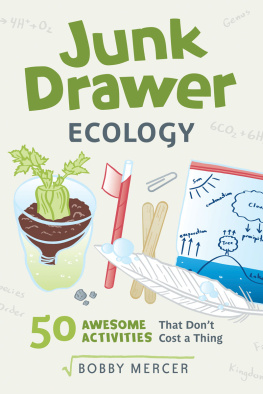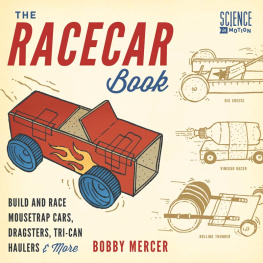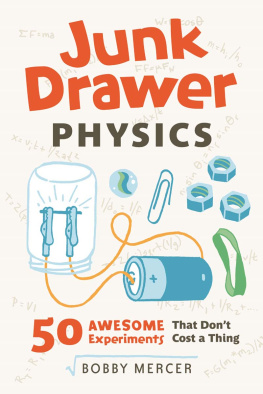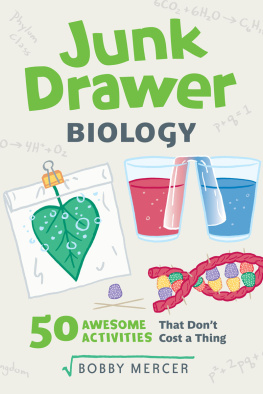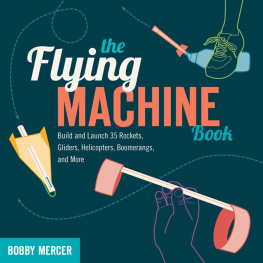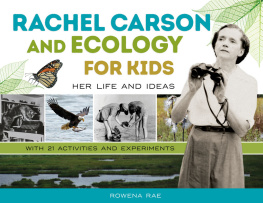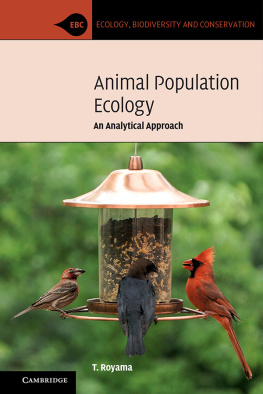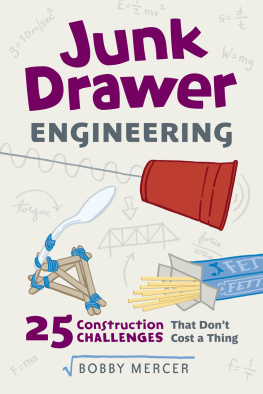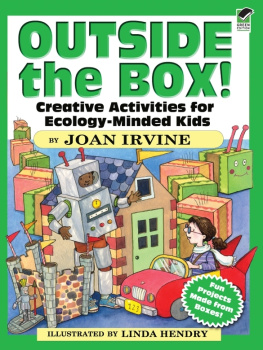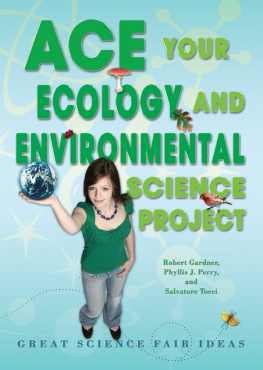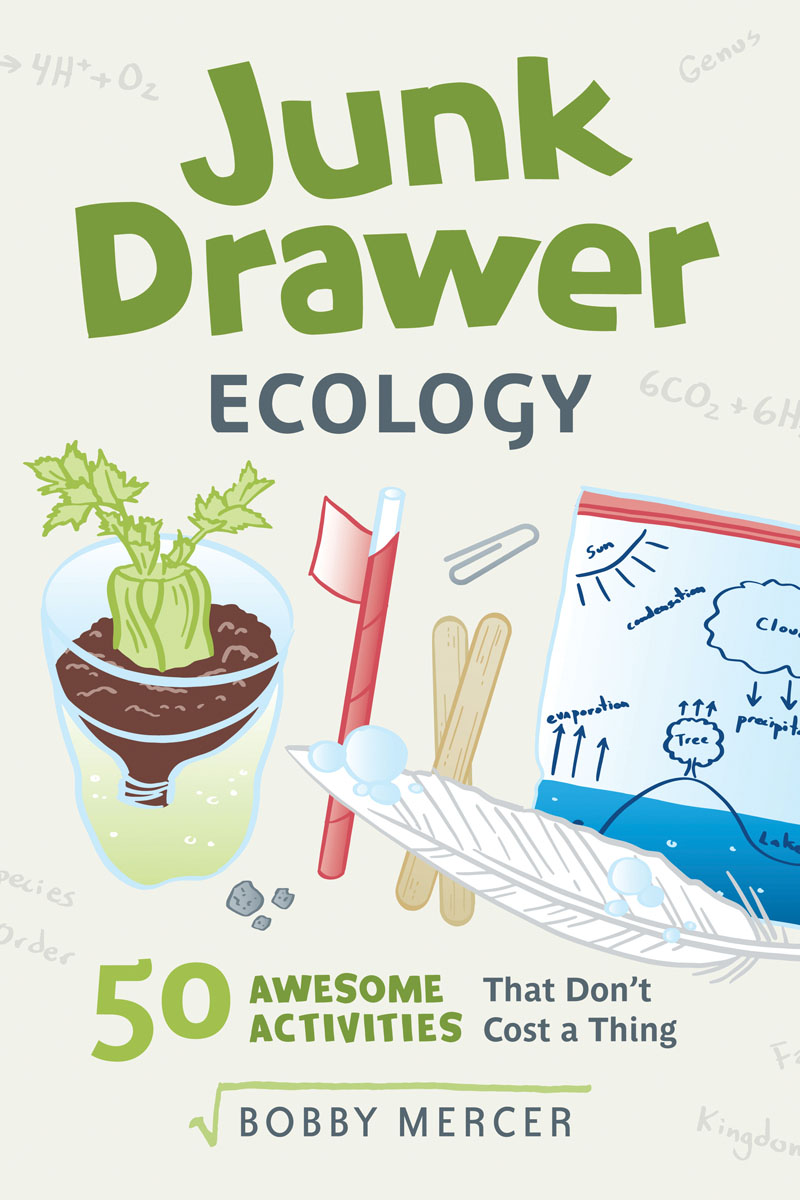
Copyright 2022 by Bobby Mercer
All rights reserved
Published by Chicago Review Press, Incorporated
814 North Franklin Street
Chicago, Illinois 60610
ISBN 978-1-64160-549-6
Library of Congress Control Number: 2021946273
Cover design and interior illustration: Andrew Brozyna
Interior design: PerfecType, Nashville, TN
Interior photos: Bobby Mercer
Printed in the United States of America
5 4 3 2 1
To Nicole and Jordan, may you always ask why.

Contents
Introduction
T he world we live in is a beautiful place. Everything has its function, even if it isnt obvious. Throughout history, curious individuals have studied our world in many different ways in an attempt to understand it better. But today, scientists tend to specialize in specific disciplines. They might be chemists, physicists, engineers, biologists, or ecologists. Ecology is the branch of biology that deals with organisms and their interactions with the part of the world they live in.
Scientists are naturally curiousthey want to know the why behind everything. The best natural scientists in the world are the young. Every four-year-old is constantly asking why. Embrace that inner child. Be a scientist and wonder why.
Our climate is changing. The climate has changed throughout Earths history, but it is changing even faster now, and understanding why is more important than ever. The choices we make affect our world. We love clean air and water. We love plants, trees, and animals. And we need to take care of our planet.
The activities in this book give you hands-on examples of how to make this planet better. You will grow your own plants. You will learn how to reduce the use of harmful plastics in daily life. You will learn how animals, plants, and you interact with the environment. You will learn ways to save energy, to create less trash, and most important, to love and cherish our planet. You can make a difference.
You will use a variety of tools for these activities. Most you will have in your junk drawer, like pens, paper, paper clips, markers, and scissors. A good thermometer is also important to several of the activities. Body temperature thermometers usually only have an extremely limited range and dont work for most of the activities, but oven thermometers will work well and are unbelievably cheap. People who cook a lot of food on the grill are likely to have a cooking thermometer, which can also double as a wonderful science thermometer, covering all the temperatures you need for these activities. More expensive grill thermometers have two probes hooked to a digital readout, one for inside the food and one for outside. You can also buy small thermometers that are filled with alcohol. Teachers usually have access to this type of thermometer.
My hope is that you will learn and smile at the same time. Our wonderful planet is special. It provides us food and fun. Trees, bushes, flowers, fruits, animals, and you all deserve a great place to live. Enjoy these activities and change the world.
Reduce, Reuse, and Recycle
W e live on a wonderful planet, and we want to keep it that way. As our population grows, we need to be aware of ways to reduce the materials and energy we use. We need to reduce what we throw away and we need to recycle and reuse everything we can.
Little things can make a difference, so lets learn some ways to reduce, reuse, and recycle.
Mini Greenhouse
Grow your own plants in these tiny greenhouses.
Ecology Concepts: Radiant heat, using a greenhouse to grow plants
From the Junk Drawer:
- Scissors
- Thin-walled plastic bottle
- Potting soil
- Seeds (store-bought are best)
- Marker
Step 1: Use scissors to cut a thin-walled plastic bottle about a third of the way up from the bottom.

Step 2: Cut the bottle again near the top, where the bottle starts to narrow toward the neck.

Step 3: Slide the top part into the middle part to create a short minibottle.

Step 4: Pull the top back off and fill the bottom about three-quarters full of potting soil. You can also use dirt from an outside flower garden if you dont have any potting soil.

Step 5: Use your finger to poke a small hole in the soil and place the seed in that hole. Cover up the seed with soil.

Step 6: Add three tablespoons of water to the soil and put the top of the bottle back on. Label the top of the bottle with the type of plant you are growing. Place in sunlight, either outside or near a sunlit window.

Step 7: Observe your Mini Greenhouse over the next few days. This photo was taken after 12 days. The plant will soon need to be transplanted into a bigger pot, depending on what you are growing, though it may be OK for a small plant to stay in this container.

The Science Behind It
Greenhouses trap the suns radiant heat and keep the moisture inside. That is why you saw water droplets inside the bottle. This warm, moist greenhouse is perfect for growing baby plants and will allow you to grow plants all year long. Even when it is cold outside, the greenhouse traps the heat and moisture so the plants can grow.
At some point, larger plants should be transplanted into larger pots or into the ground outside, if the weather is right. Information is available online for planting in your area. Most states also have agriculture extension offices, which are staffed with people who would be glad to answer your questions. They love gardening and sharing what they know.
Science for the Ages
This is perfect for a classroom or camp setting, since every kid could have their own plant to take home. You could get your own seeds from plants, but in my experience, they only grow about half the time. Store-bought seeds almost always grow. A small package of seeds will usually be enough for a classroom.
Larger Greenhouse
Start your own garden by growing multiple plants using a Larger Greenhouse.
Next page
